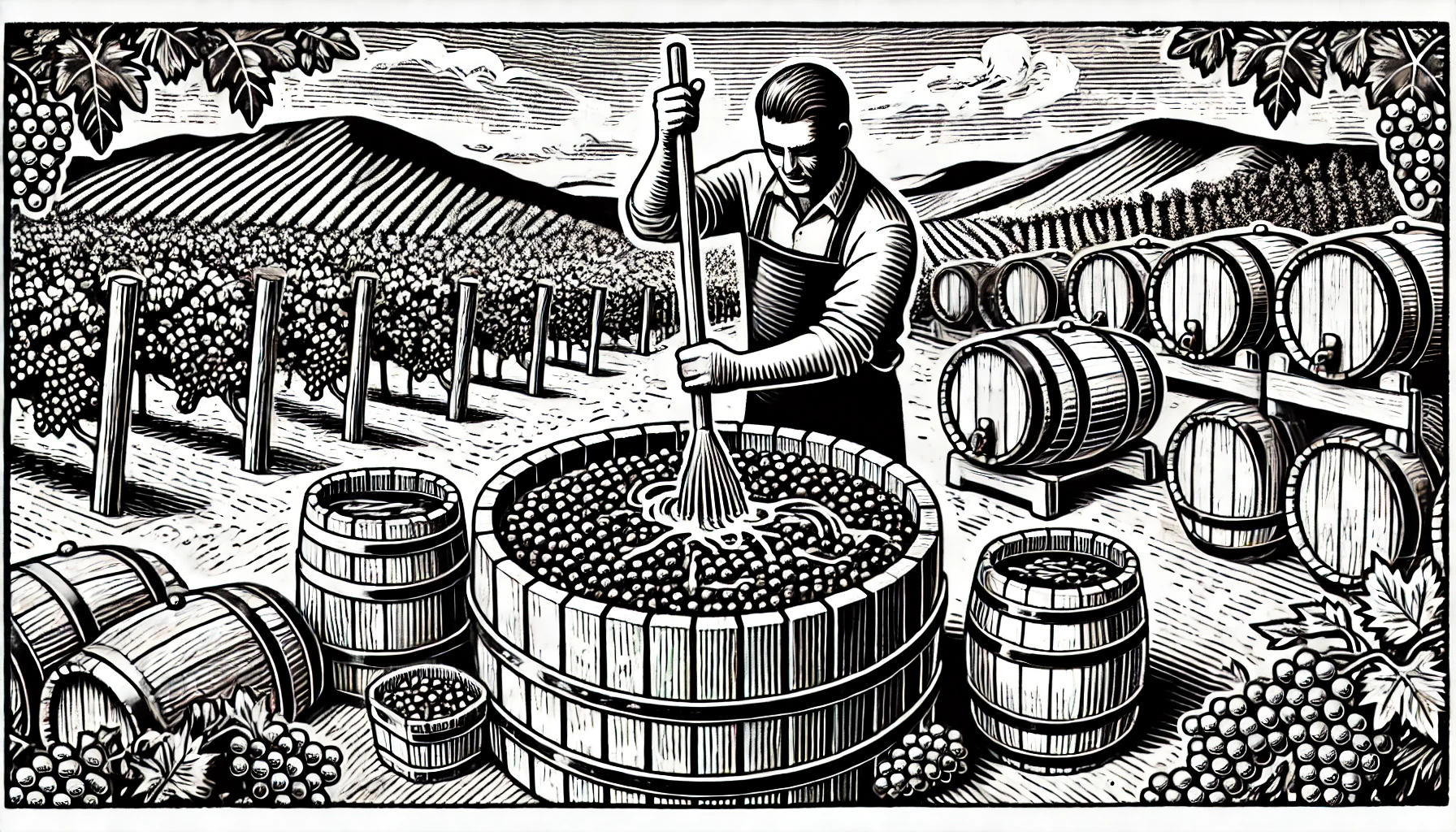
Extraction in winemaking refers to the process of pulling out compounds such as tannins, pigments, and flavors from grape skins, seeds, and stems during fermentation. This process is especially important in red winemaking because it determines the wine’s color, structure, and overall depth of flavor. The intensity varies depending on the winemaking style, grape variety, and the desired characteristics of the final wine.
During fermentation, grape skins are kept in contact with the juice to extract these essential components. Winemakers use different methods to manage extraction, such as pump-overs (circulating the juice over the cap of skins) and punch-downs (submerging the cap of skins into the juice). The amount of time the wine spends on the skins is a critical factor, as longer maceration periods generally result in more intense flavors, tannins, and color.
Winemakers carefully control the extraction process to avoid harsh tannins or overly astringent wines. For example, in softer, fruitier red wines like Pinot Noir, gentle extraction is often preferred to preserve elegance and finesse. In contrast, bold red wines like Cabernet Sauvignon or Syrah benefit from more aggressive extraction techniques to build structure and body.
Ultimately, extraction plays a crucial role in defining a wine’s aging potential. Wines with higher levels of tannins and structure often improve over time, while wines with lighter extraction are typically enjoyed young. It’s a delicate balance that skilled winemakers fine-tune to achieve the desired style.
Curious about more wine terms and insights? Visit our Wine Wiki section and explore the basic wine terms for expert definitions and tips!